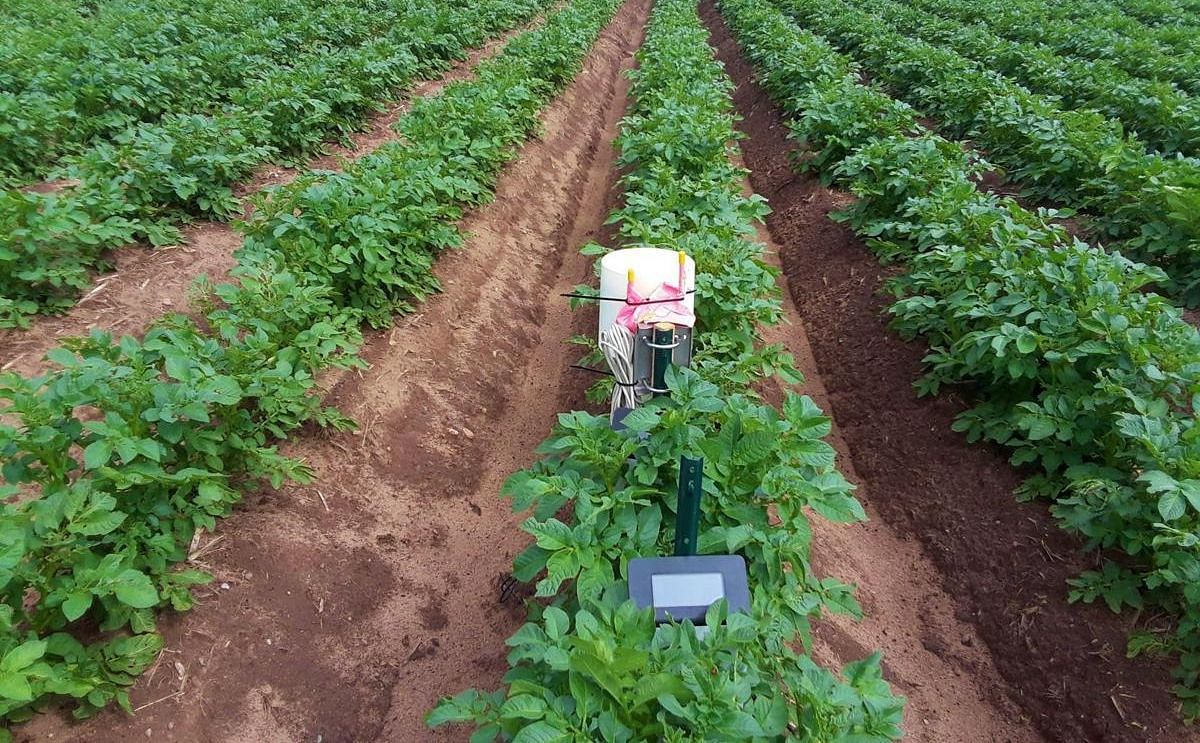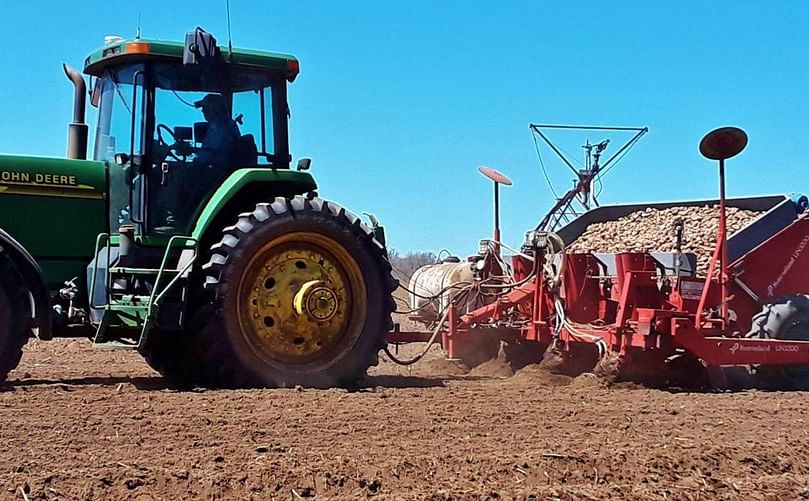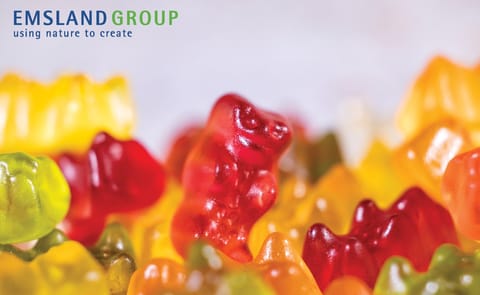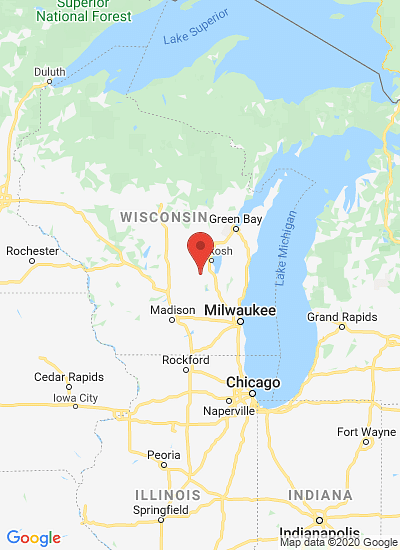Potatoes are particularly challenging to control nitrate leaching because the hill and furrow system tends to promote both water recharge and nitrate leaching loss due to the high nitrogen demand of that particular crop (Courtesy: Kevin Masarik/University of Wisconsin)
Primaire tabs
Research: Interseeding the potato crop to reduce nitrate leaching

A two-year project funded through the University of Wisconsin-Water Resources Institute is investigating an interseeding cultivation method for potato cropping that shows early promise to reduce nitrate leaching.
Kevin Masarik, researcher from UW-Stevens Point:
"When you look at impacts on the groundwater system from typical cropping systems in the Central Sands (region of Wisconsin), they tend to leach nitrate. Potatoes are particularly challenging because the hill and furrow system tends to promote both (water) recharge, as well as nitrate leaching loss due to the high nitrogen demand of that particular crop."The researcher is pursuing what he termed an outside-the-box idea -- interseeding rye, oat and millet between the rows of potatoes to create biomass to take up excess nitrates.
In children 6 months and younger, nitrate promotes the oxidation of hemoglobin to methemoglobin that limits blood’s ability to bind and transport oxygen, depriving the infant of oxygen. Nitrate has also been linked to cancer, thyroid disorders, birth defects and hypertension.

Portage County farmer Justin Isherwood in 2020 provides a test plot for University of Wisconsin potato research. He says he wants to do that again this year.
Masarik said for the past 20 or 30 years, when the cause and extent of nitrate in groundwater has been documented, there’s been a simultaneous gap.
Kevin Masarik:
"We’ve been good at pointing out that there’s a problem, but we haven’t been good at pointing out what the solution is. In the last five years I’ve been trying to switch the questions that I’m interested in, devoting my time and attention to investigating potential solutions that significantly improve water quality. And that’s what this project was born out of."Critically the project also needs to ensure a potato harvest isn’t hindered nor yield significantly reduced by the additional vegetation between rows. Masarik said he's grateful for the cooperation of Portage County farmer Justin Isherwood, who in 2020 provided a test plot.
Justin Isherwood:
"It’s (the study) giving me the book. We know a lot of things in agriculture. There are a few things in agriculture we don’t know. Kevin is giving me those letters and the alphabet. He’s giving me the language of the landscape."Isherwood said he's game to again participate in the study this year.
Justin Isherwood:
"It’s exciting to be a part of the science and to be involved in the discovery."Discoveries of this past year will be applied. Rye is likely to be removed from the seed mix because it put early energy into root growth, resulting in slow above-ground growth. The rye was then shaded out by potato plants.
Oat and millet, though, are a different story.
Kevin Masarik:
"(They) did have some success. I think it showed that the amount of biomass accumulation and the amount of nitrogen that the interplanting or that cover crop was able to capture is significant enough that this could be viable."Conceived in 1964, the Water Resources Research Institute Program is a nationwide network of 54 university-based programs of research, outreach and education dedicated to solving state, regional and national water-resource problems. The program is a state-federal partnership supported with funding from each state as well as the U.S. Geological Survey and the U.S. Department of the Interior.
Additional funding for the UW-Water Resources Institute is provided by the Wisconsin Groundwater Research and Monitoring Program.
Like to receive news like this by email? Join and Subscribe!
Get the latest potato industry news straight to your WhatsApp. Join the PotatoPro WhatsApp Community!
Uitgelichte Bedrijven
Sponsored Content
Sponsored Content
Sponsored Content
Sponsored Content









